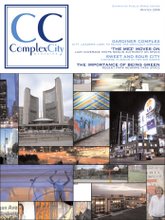Living at home in a foreign land . . .
 BY SEAN BAILEY
BY SEAN BAILEY
When Peter Hui stands at the corner of Dundas Street West and Spadina Avenue, he imagines it could be a small part of Hong Kong. He sees the throng of people and Toronto’s oldest and largest Chinatown.
“It’s a compact version of a Chinese city,” Hui said.
Hui, president of the Toronto Chinese Business Association, says the city of Toronto’s Chinatown visually represents a microcosm of a city in China. Normally there is a district for food, clothing and entertainment, but in Toronto everything is situated in one neighbourhood.
Toronto is home to three Chinatowns, with more popping up outside of the city’s boundaries in neighbouring Markham and Richmond Hill. Scarborough is home to a Chinatown in the Agincourt neighbourhood and there is another Chinatown in East York. However, the original or “old” Chinatown is located downtown.
Peter Chiu, the program manager of the Toronto Chinese Community Services Association, says the need to stick together within a community is the Chinese way.
“It doesn’t matter what country it is,” he said. “You can find Chinatown in pretty much every country in every big city. It’s the culture of Chinese people.”
While walking down Spadina Avenue, Chiu says he sees a sea of Chinese people, interspersed with tourists.
“In terms of the setting it’s not necessarily all Chinese,” he said, “but with all the signs and all the billboards you wouldn’t mistake it for any other area.”
Chiu is right in saying Chinatown is not in fact all Chinese. There are many different cultures within the neighbourhood. It is home to people from Thailand, Taiwan, Malaysia as well as Viet Nam.
The City of Toronto actively promoted the building of these immigrant communities. Martin Silva, who took over the spot of councillor for Trinity-Spadina, says the city has a history of making the transition for new immigrants – such as Italians, Portuguese and Chinese – as accommodating as possible and cultural communities are beneficial to achieving that goal.
“An effort has been made to allow people that come to the city from the various parts of the world to somehow maintain their connection to their visual and to their cultural (identity) in their (home) city,” Silva said.
In particular, the city encourages merchants to sell their products to passersby along the street. The streets become very crowded with neighbourhood residents and tourists alike vying for food or bootlegged DVDs they may not find in any other part of the city. The traffic increases the population density, which gives the impression of an actual Chinese marketplace.
Silva says the city respects the way the merchants conduct their activities, but they must also look at safety issues that may arise from reduced sidewalk space.
“It’s always been a compromise,” he said. “If the inspectors are too strict on the enforcement, the community rebels. If we don’t enforce at all, people are forced to walk on the road and finding that perfect balance is more of a science.”
Hui says he hasn’t noticed a problem with market space in the area. He says the sidewalks are large enough to fill the needs of the merchants. The only problem he agrees with is overcrowding, but mainly during peak times of business on the weekends.
The crowding aside, Silva still promotes the area as a great tourist destination, ranking it with the Eaton Centre and the CN Tower. He says people come to the area for the great atmosphere as well as the culture of Toronto’s old Chinatown.





No comments:
Post a Comment